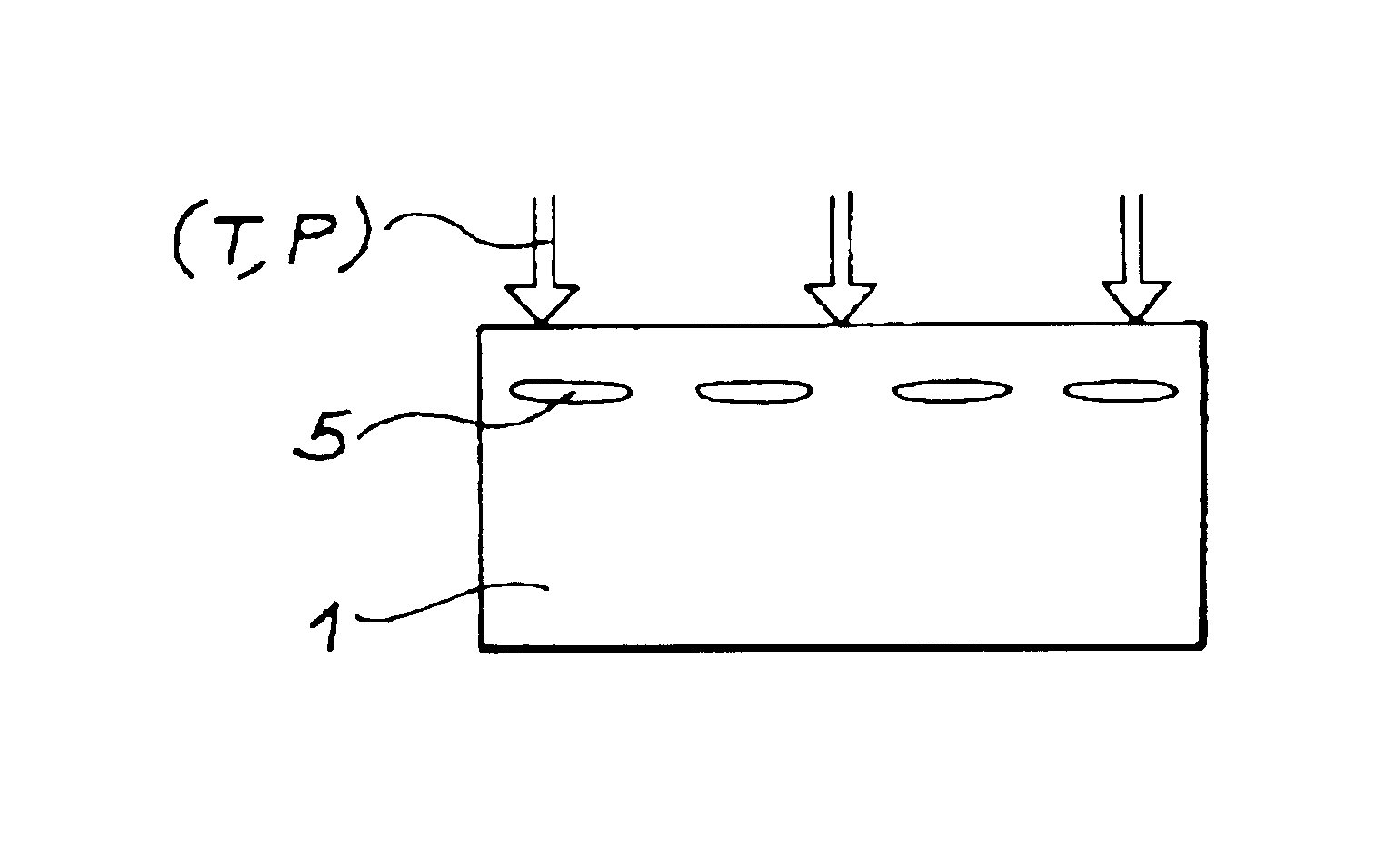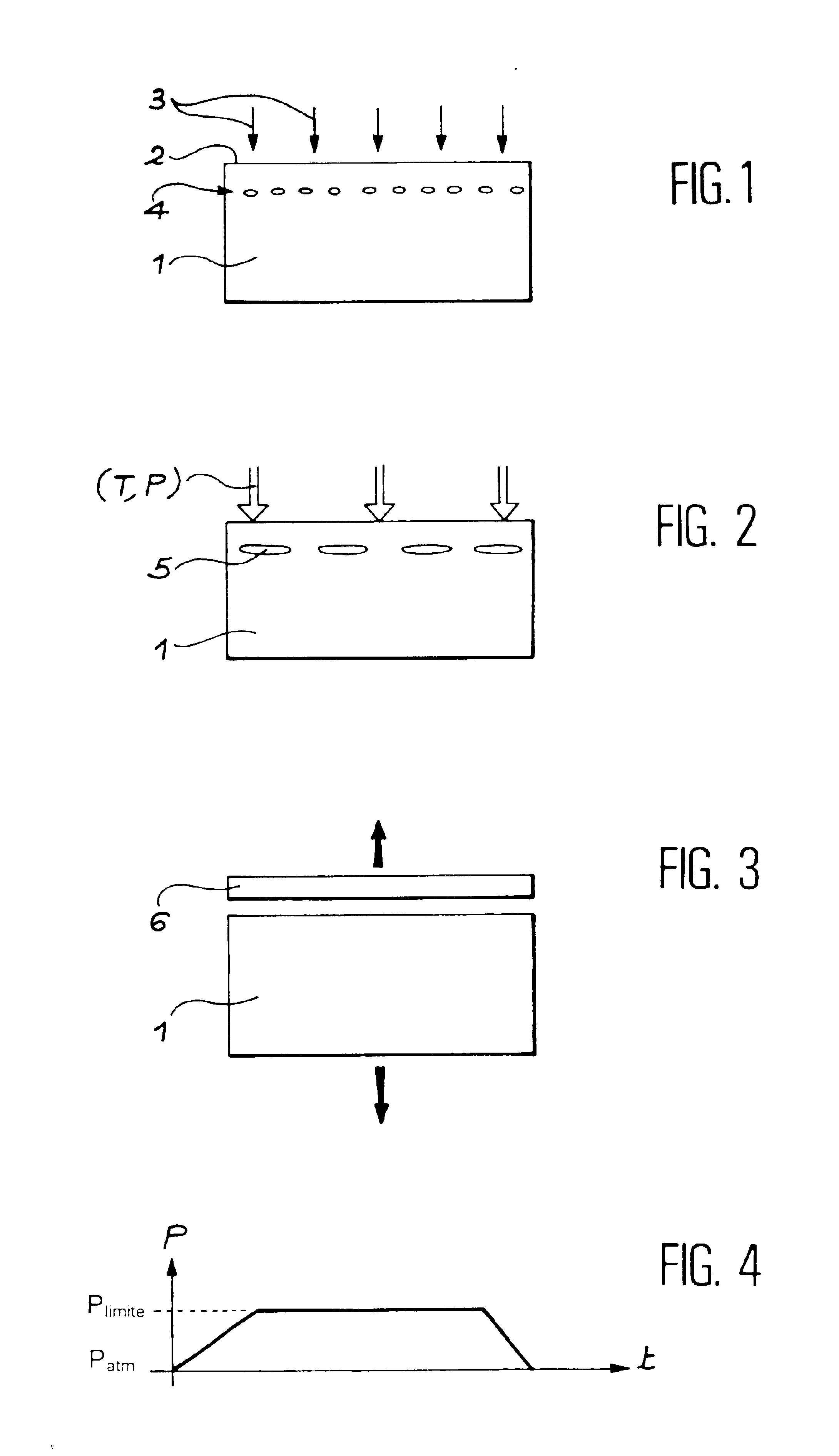Method for making a thin film using pressurization
a technology of pressurization and thin film, applied in the direction of individual semiconductor device testing, semiconductor/solid-state device testing/measurement, instruments, etc., can solve the problem of insufficient bonding force to cause the stiffening effect, excessive weakening of the implanted zone, and inability to bond the implanted substrate and the support acting as a stiffener
- Summary
- Abstract
- Description
- Claims
- Application Information
AI Technical Summary
Benefits of technology
Problems solved by technology
Method used
Image
Examples
Embodiment Construction
The principle used in the invention is based on the use of pressure during one or several heat treatments to weaken the implanted zone while preventing the formation of blisters.
Coalescence may be achieved by combining a heat treatment cycle associated with a pressurization cycle in order to increase the weakening phenomenon without creating blisters on the implanted face. The pressure may be a gas pressure. The weakening phenomenon may be continued until complete separation of the two parts of the substrate. The substrate weakening process at the ion implantation depth continues while coalescence is taking place, and it may go beyond the limits possible with a simple heat treatment. The pressure applied on the implanted face of the substrate makes this result possible by preventing the formation of blisters on the implanted face and also by preventing some blisters from bursting as can occur if there is no applied pressure. The result is that the substrate is much weakened along th...
PUM
 Login to View More
Login to View More Abstract
Description
Claims
Application Information
 Login to View More
Login to View More - R&D
- Intellectual Property
- Life Sciences
- Materials
- Tech Scout
- Unparalleled Data Quality
- Higher Quality Content
- 60% Fewer Hallucinations
Browse by: Latest US Patents, China's latest patents, Technical Efficacy Thesaurus, Application Domain, Technology Topic, Popular Technical Reports.
© 2025 PatSnap. All rights reserved.Legal|Privacy policy|Modern Slavery Act Transparency Statement|Sitemap|About US| Contact US: help@patsnap.com


